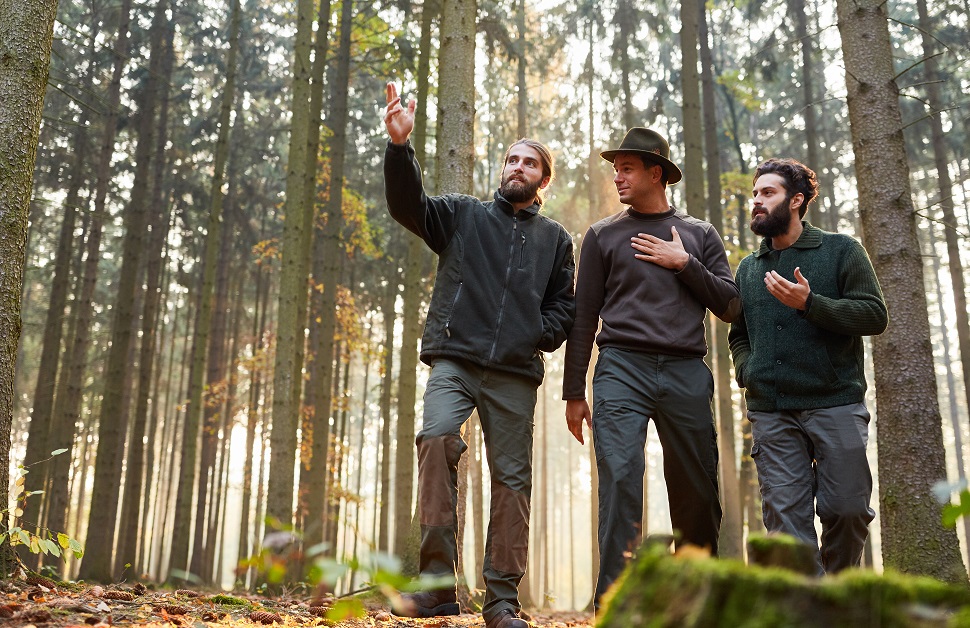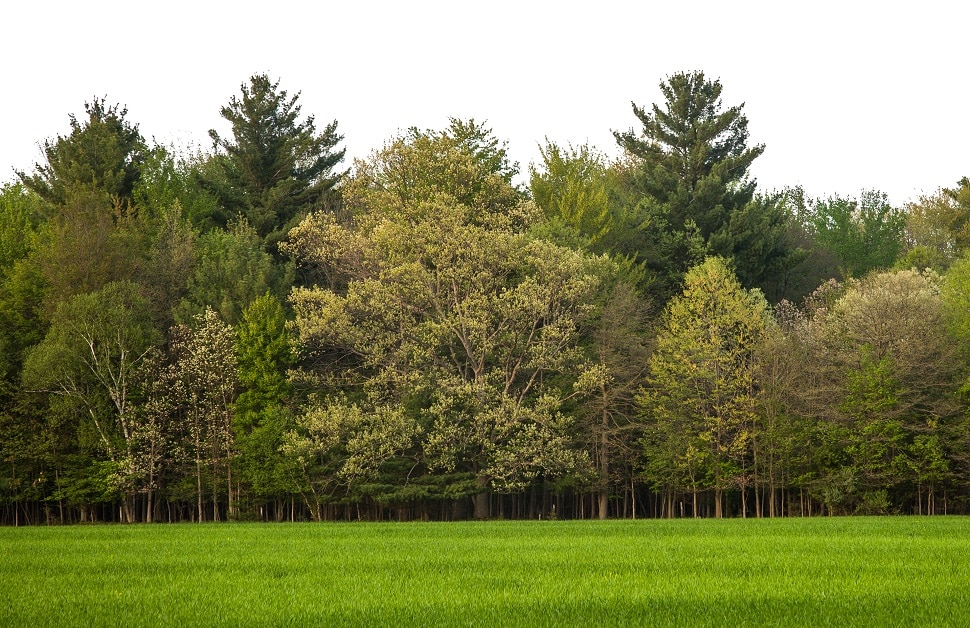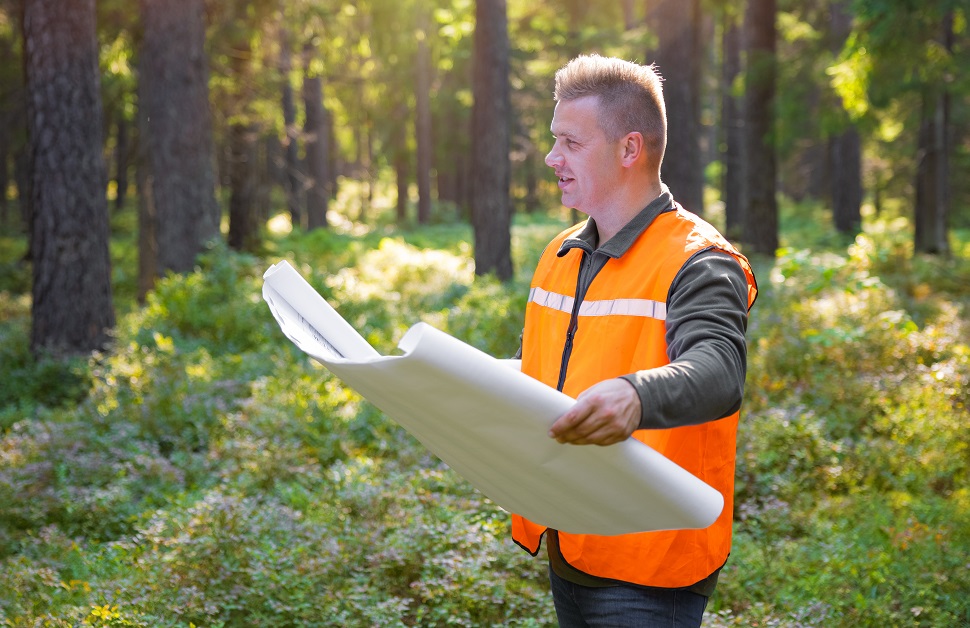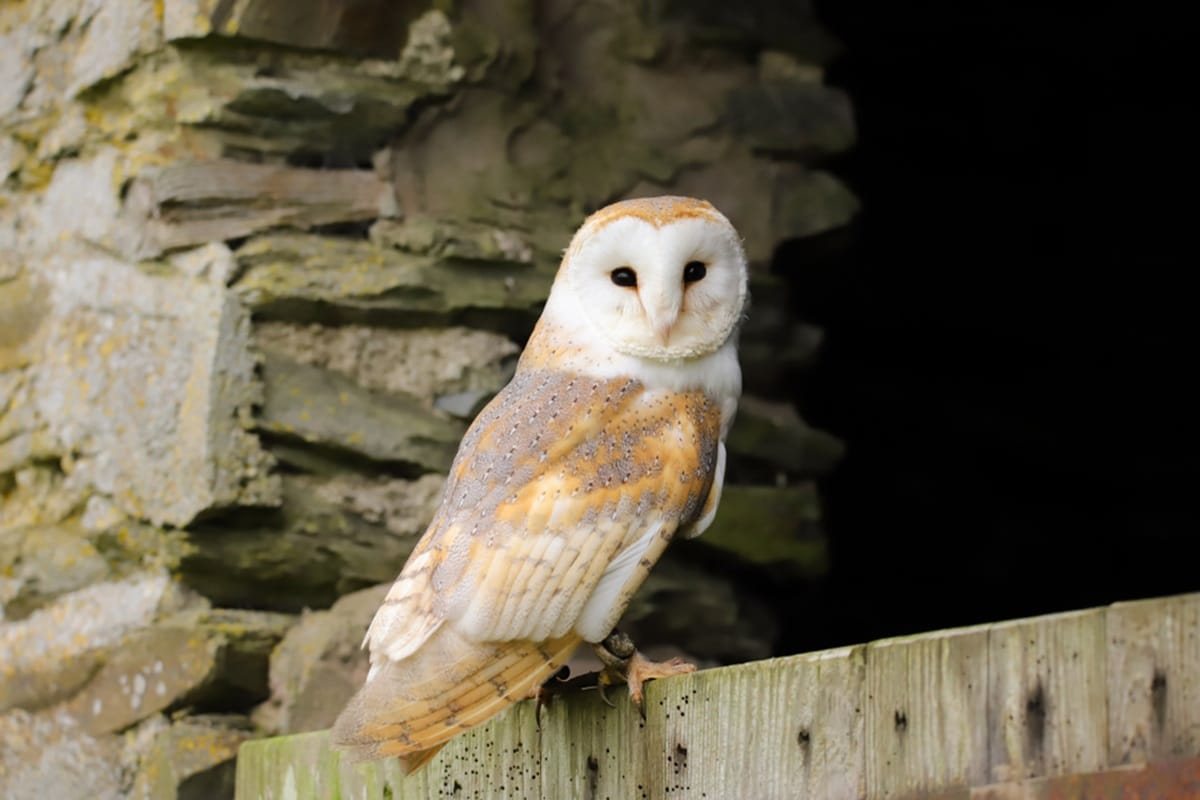
Between general inflation and a bottleneck as a result of delays caused by the COVID-19 pandemic, the ability to buy land or a property has become a far more difficult and costly task. With more obstacles around buying greenfield land or even simply purchasing a residential property, the concept of buying woodland instead has come as an intriguing alternative. It also offers numerous benefits, including being a potentially more valuable investment.
In the guide below, we provide more information on buying woodland, explaining why you might choose to do this over greenfield land or an existing property, how it could be an astute investment, how different types of woodland differ, whether the price of woodland varies by location, how you can increase the likelihood of gaining planning approval on woodland, and how you can make the first step in buying your own large or small woodlands.
Get Your Free Quote
Do you need a quote for ecology surveys, tree surveys, flood risk, contaminated land or biodiversity net gain? Contact us for your free quote.
Why buy woodland?
If you don’t own a section of woodland yourself, you may be wondering why someone would choose to invest. In fact, there are many different reasons why people typically buy woodland, and the benefits can extend to private individual buyers, investors of commercial forests, and environmental groups with a focus on wildlife conservation.
Common reasons for buying woodland:
- Farming or agricultural land
- Investment in a high amenity area
- Mental health and wellbeing
- Private residential property development
- Recreational entertainment such as camping, hiking and other outdoor activities
- Self-sufficient and sustainable living
- Wildlife conservation, environmental preservation and protection of natural assets and habitats
Alternatively, a business that generates money via a timber income, for example, could buy a woodland area to utilise this material from the trees. By doing this, they can develop a form of conveyor belt system, starting by harvesting timber from trees on the plot of land to producing and distributing products to paying customers.
Is buying woodland a good investment?
For many savvy woodland owners, the purchase is seen as a long-term exercise in building private or professional wealth. Over the past 20 years, the return on woodland investments has increased to an estimated 9%, surpassing the growth in value of rental properties.
Woodland is also often cheaper than agricultural land – both arable and pasture – and after two years, if you can prove that it has been commercially managed, it can be exempt from inheritance tax. As such, buying woodland can be a valuable investment, both privately and commercially.

Types of woodland
There are several different types of woodland, and prior to investing, it is important that you understand how they differ so you can choose an option that suits the intended purpose.
Types of woodlands for sale:
Ancient woodland
Woodland that possesses valuable ecosystems and date back at least as far as 1600AD is considered ancient woodland. As they have existed for hundreds of years, ancient woodlands are irreplaceable and therefore extremely valuable.
Coniferous woodland
Woodland that consists primarily of conifers such as fir, pine and spruce trees is labelled as coniferous woodland. Effective in instantly regrowing leaves, coniferous woodlands are often evergreen.
Coppice woodland
Woodland where the trees are cut systematically is known as coppice woodland. Originating from ‘couper’ – the French word for cutting – coppice woodlands are useful for approaching the utilisation of materials sustainably by generating natural wood in a set schedule.
Deciduous woodland
Woodland that consists primarily of trees with broad leaves such as beech, elm and oak is labelled as deciduous woodland. Common throughout the UK, deciduous woodlands lose their leaves in winter before regrowing them in the spring.
Mixed woodland
Woodland where the minority of trees are coniferous or deciduous is recognised as mixed woodland. As not all woodland areas house the same types of trees throughout, mixed woodlands account for wooded sections that have a combination of trees present.

Woodland for sale in the UK
Although choosing a suitable type of woodland for a specific purpose may make the investment worthwhile, the location of the plot will significantly impact the price you pay. As with all land or property purchases, the cost could be distinctly different based on the country, region, county, town or city and even, in some cases, the exact location.
Below, we’ve provided an overview of new woodlands for sale in England, Wales, Scotland and Northern Ireland to indicate the likely cost, as well as available plots based on location and popularity.
Woodland for sale in England
With 10% of the country considered woodland, England has a vast number of wooded areas. Surrey houses the most, accounting for as much as a fifth of the South East county. Yorkshire and the Humber has the lowest, offering a mere 6% of woodland. That said, Tilhill’s UK Forest Market Report 2021 claims that just 2% of woodland sales across the UK were made in England.
However, while this is an unexpectedly low figure, it may be due to England having the largest average woodland price. Currently, to buy woodland in England, you would have to pay around £5,500 per acre, potentially causing land buyers to look elsewhere – such as Wales or Scotland – as a comparatively cheaper alternative.
Woodland for sale in Wales
15% of Wales is classed as woodland, with the largest forest being Wentwood Forest – amassing more than 2,500 acres. According to Tilhill’s UK Forest Market Report 2021, 22% of the UK’s woodland sales were in Wales.
Based on these findings, it appears that Wales has over ten times the number of woodland sales than England, despite only having 5% more woodland. The cost of woodland in Wales is around £1,700 cheaper – currently at an estimated £3,800 per acre – making sense of the higher volume of woodland sales.
Woodland for sale in Scotland
Somewhat unsurprisingly, Scotland has the largest ratio of woodland to other types of land, with 19% of the country wooded, including the remarkable Galloway Forest Park. Spreading over an incomprehensible 191,300 acres, Galloway Forest Park is not only the largest forest in Scotland, but also in the entire United Kingdom.
With woodland in abundance across Scotland, it will come as no shock to learn that the average price of woodland in Scotland is distinctly lower than in England and Wales. Current figures indicate that Scottish woodland is typically around £1,600 per acre. Tilhill claim that as much as 76% of UK woodland sales were made in Scotland – something that was likely caused by the broader choice of available land and significantly lower prices.
Woodland for sale in Northern Ireland
Only 9% of Northern Ireland is woodland, and just 1% of that is in a favourable condition. Conagher Forest is recognised as the largest continuous forest in the country. But as it takes up 2,629 acres from the total 3.4 million acres across the entirety of Northern Ireland, the presence of trees has a lot to be desired.
The Woodland Trust are part of an ongoing appeal for Northern Ireland to put more of an emphasis on the environment. Currently, compared to the rest of Europe, the country has the lowest level of accessible woodland, the lowest density of woodland and the fewest wooded areas. On average, European nations have an average of 37% woodland coverage, whereas Northern Ireland has a far lower 8%. Part of the Woodland Trust’s campaign is to raise the coverage of woodland from 6% to 12% by the year 2050. However, as that would mean increasing the planned planting of trees per year from 200-300 hectares of trees to 2,000 hectares of trees, it would take a massive change and a lot of funding for this to become a reality.

Cheap woodland for sale
Using the information above, you can see just how much the cost of woodland is likely to vary based on location. Due to this, if you were buying a plot of woodland in a desirable part of the UK, it is likely that you would pay, on average, around £10,000 per acre, an estimated £600-£900 in solicitor fees, searches and the land registry title registration fee, as well as stamp duty (if the purchase fee was above £150,000).
Another consideration that would benefit your budget long-term would be having the appropriate surveys carried out on the woodland area, particularly if you are planning on developing the land to create a new woodlands for timber income, for example. It may seem like an unnecessary expense, but by arranging a topographical survey (land survey) to assess natural and man-made features, a tree survey to determine the value of trees present, and any applicable protected species surveys or ecology surveys, you can avoid any potential problems with the local planning authority and prevent being refused permission for planning approval or penalised for breaching UK laws. Likewise, if you are focusing on wildlife conservation, for instance, a Preliminary Ecological Appraisal (PEA) will help to identify protected species and valuable plants on the site.
Our surveyors are experts in wildlife conservation, up to date with the latest news and regulations and, providing they are given good access to the site, can carry out the required arboricultural and ecological surveys on big and small woodlands.
Woodland for sale near me
Regrettably, the majority of websites for estate agents don’t include a search feature to find woodlands for sale, making the process of finding a suitable plot near to your chosen location more difficult. However, it is possible to search for current plots of woodlands for sale through the Addlands website.
Simply visit the Addlands website, click ‘Find’ at the top of the page and select ‘Woodland for sale’. You can then enter in your location, price range and specific land type to identify an available plot of woodland.





